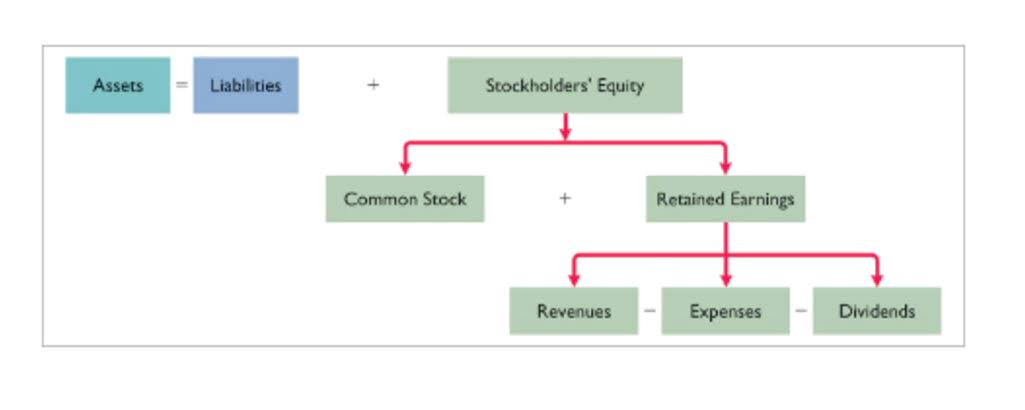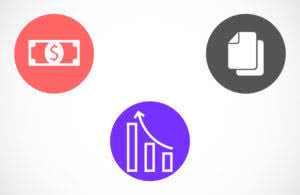Content

The most common reason for balance sheet discrepancies is a ledger account entry erroneously placed on the debit side or credit side of the wrong account. You will notice that the
transactions from January 3, January 9, January 12, and January 14
are listed already in this T-account. The next transaction figure
of $2,800 is added directly below the January 9 record on the debit
side. The new entry is recorded under
the Jan 10 record, posted to the Service Revenue T-account on the
credit side.
- Larger grocery
chains might have multiple deliveries a week, and multiple entries
for purchases from a variety of vendors on their accounts payable
weekly. - Such software automatically stores a complete record of the transaction as checks are generated.
- Therefore, asset, expense, and owner’s drawing accounts normally have debit balances.
- The equipment is an asset, so you must debit $15,000 to your Fixed Asset account to show an increase.
- The more you owe, the larger the value in the bank loan bucket is going to be.
- Cash had a debit of $20,000 in the journal entry, so
$20,000 is transferred to the general ledger in the debit column.
Let’s say you just sold a one-year premium subscription for $20,000 and your client paid in cash. Some accounts have a debit-side balance, while others have a credit-side balance. Let’s do one more example, this time involving an equity account.
T-Accounts and their role in accounting systems
The ingredients for the cup of coffee are recorded as inventory (asset account). My inventory is reduced each time I sell a coffee so I need to credit the inventory account by 50p, reducing its value. The main purpose of using a T-Account is to help track and manage an individual’s financial transactions. By keeping track of debits and credits, it becomes easier to monitor the flow of money going in and out of a particular account. In the journal entry, Utility Expense has a debit balance of
$300.
- The best way to understand how the rules of double-entry bookkeeping work is to consider an example.
- A trial balance summary is a report that summarizes the account balances in a company’s general ledger.
- With the outstanding bill paid, accounts payable account is debited by £700, reducing its value and showing that I no longer owe this amount.
- For the balance sheet to be balanced, a business transaction entered into the system must take away from one account and add the same amount to another and vice versa.
“Debit” does not always refer to an increase in an account balance nor does “credit” always refer to a decrease, or vice versa. Most importantly, “ credit” does not refer to something good and “debit” to something bad. On the flip side, when you pay a bill, your cash account is credited because the balance has been reduced since you recently paid a bill. Whether you use T accounts, a general ledger, or both to record every transaction, that’s only the start of monitoring and forecasting your financials. These are essential elements of the continued success of any business.
T- Account Recording
Worse yet, you may find some balances inflated or deflated, painting a picture that may not reflect reality. Working capital, cash flow, and your bank account suffer as a result. The most common method for bookkeeping is the double-entry accounting system of T-accounts. For the balance sheet to be balanced, a business transaction entered into the system must take away from one account and add the same amount to another and vice versa.

In the
debit column for this cash account, we see that the total is
$32,300 (20,000 + 4,000 + 2,800 + 5,500). The difference between the
debit and credit totals is $24,800 (32,300 – 7,500). Having a debit balance in
the Cash account is the normal balance for that account. We know from the
accounting equation that assets increase on the debit side and
decrease on the credit side. If there was a debit of $5,000 and a
credit of $3,000 in the Cash account, we would find the difference
between the two, which is $2,000 (5,000 – 3,000). The debit is the
larger of the two sides ($5,000 on the debit side as opposed to
$3,000 on the credit side), so the Cash account has a debit balance
of $2,000.
What are T Accounts?
You can see journal entries over a given period of time and view business transactions. But a T-account doesn’t necessarily help your business make wise decisions regarding managing its spending intelligently. Posting of these debit and credit transaction to the individual t-accounts provides for an accurate visualization technique for knowing what is happening in each individual account. It provides the management with useful information such as the ending balances of each account which they can then use for a variety of budgeting or financial purposes.
What side of the T account is debit?
A T account ledger is an informal way of addressing a double-entry bookkeeping system. On the top, the name of the ledger is mentioned, the left side is for debit entries, and the right side is for credit entries within the ledger.
This is why T-accounts are used by many small business owners, and both new accountants and CPAs to ensure journal entries in your ledger or accounting software are balanced. On the other hand, a credit (CR) is an entry made on the right side of an account. It either increases equity, liability, or revenue accounts or decreases an asset or expense account (aka the opposite of a debit). Using the same example from above, record the corresponding credit for the purchase of a new computer by crediting your expense account. A debit (DR) is an entry made on the left side of an account.
5: Use Journal Entries to Record Transactions and Post to T-Accounts
For instance, a debit is used to increase an expense account, therefore logically a credit would be used to decrease that account. The matching principle in accrual accounting states that all expenses must match with revenues generated during the period. The T-account guides accountants on what to enter in a ledger to get an adjusting balance so that revenues equal expenses. If you want a career in accounting, T Accounts may be your new best friend.
Accounting ends with score keeping but begins with record keeping. The first task of accounting is to accurately record transactions. Transactions are events that change the composition of t accounts a firm’s assets, liabilities, and equity. If you’re ready to automate the entire accounting process for your small business, be sure to check out The Ascent’s accounting software reviews.
Let’s look at one of the journal entries from Printing Plus and
fill in the corresponding ledgers. When filling in a journal, there are some rules you need to
follow to improve journal entry organization. The most accurate and reliable method of record keeping utilizes computer software to create and print checks. Such software automatically stores a complete record of the transaction as checks are generated. The information captured from a recorded transaction is more important than the form used in recording it.
- Once journal entries are made, they are automatically posted into respective ledger accounts.
- On the other hand, a credit (CR) is an entry made on the right side of an account.
- When you enter any forecast activity, the double-entry process is completed for you, saving you time and giving you confidence in the numbers.
- It can be used to balance books by adding all transactions in a set of accounts so the total debits equal the total credits for each account.
- They also inform decision-making for internal and external stakeholders, including company management, lenders, investors and tax agencies.
- This will give the management (Bob in this case) a holistic view of what is happening in his accounts and if there is anything out of the ordinary occurring.
- Accounts Receivable has a credit of $5,500 (from the
Jan. 10 transaction).
This can be during the normal course of business or when preparing adjusting entries at the end of an accounting period. Let’s look at the journal entries for Printing Plus and post
each of those entries to their respective T-accounts. Colfax Market is a small
corner grocery store that carries a variety of staple items such as
meat, milk, eggs, bread, and so on. As a smaller grocery store,
Colfax does not offer the variety
of products found in a larger supermarket or chain. You can see that a journal has columns labeled debit and credit. The debit is on the left side, and the credit is on the right.